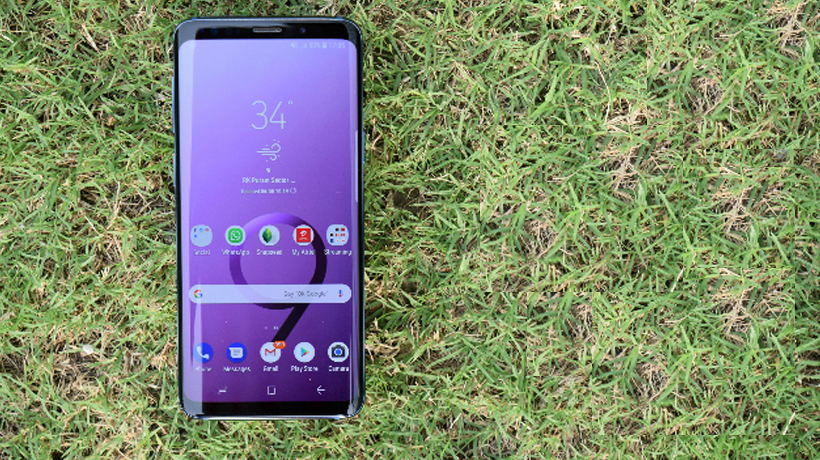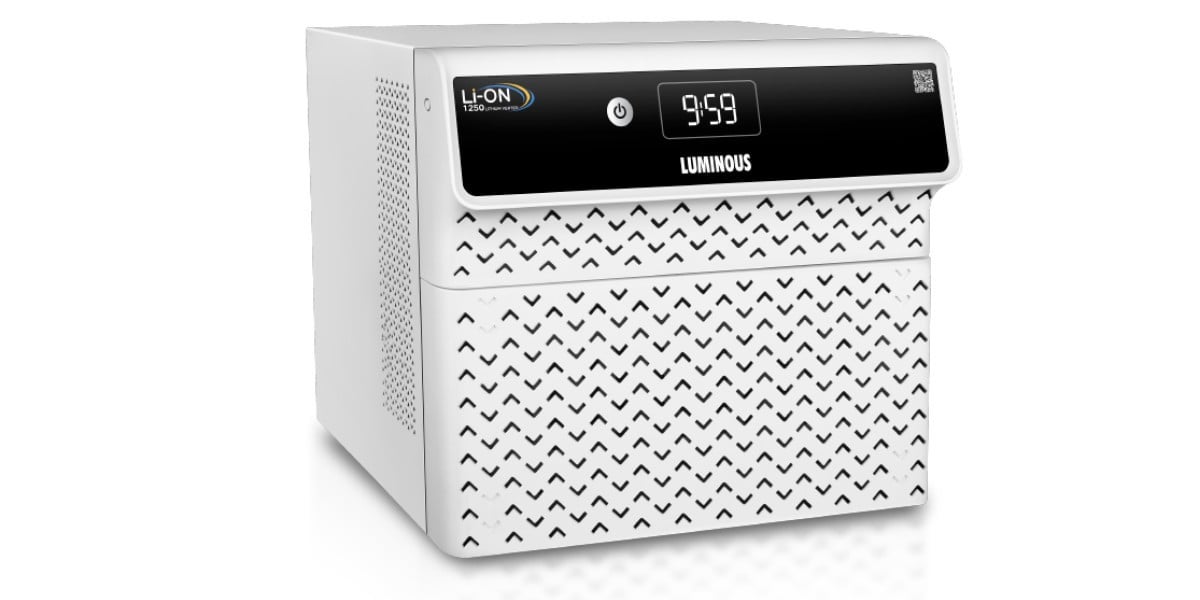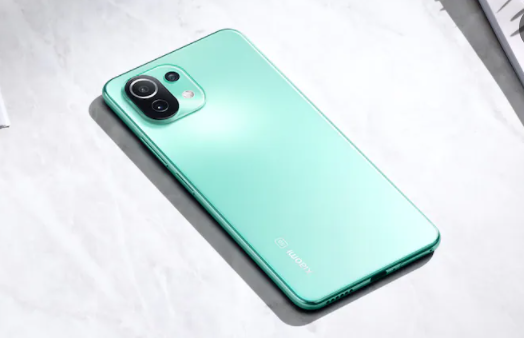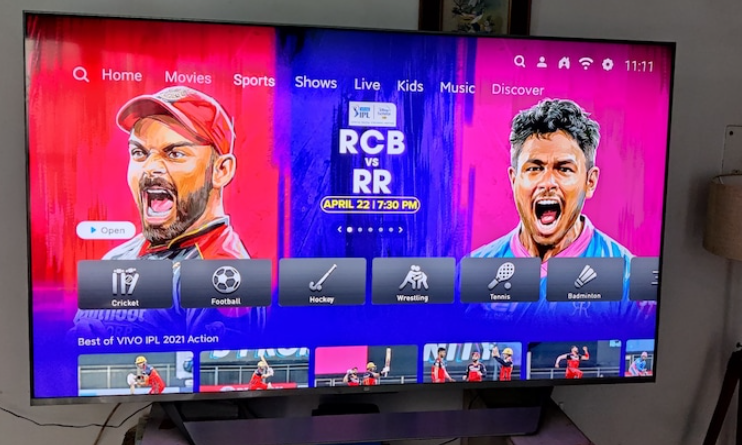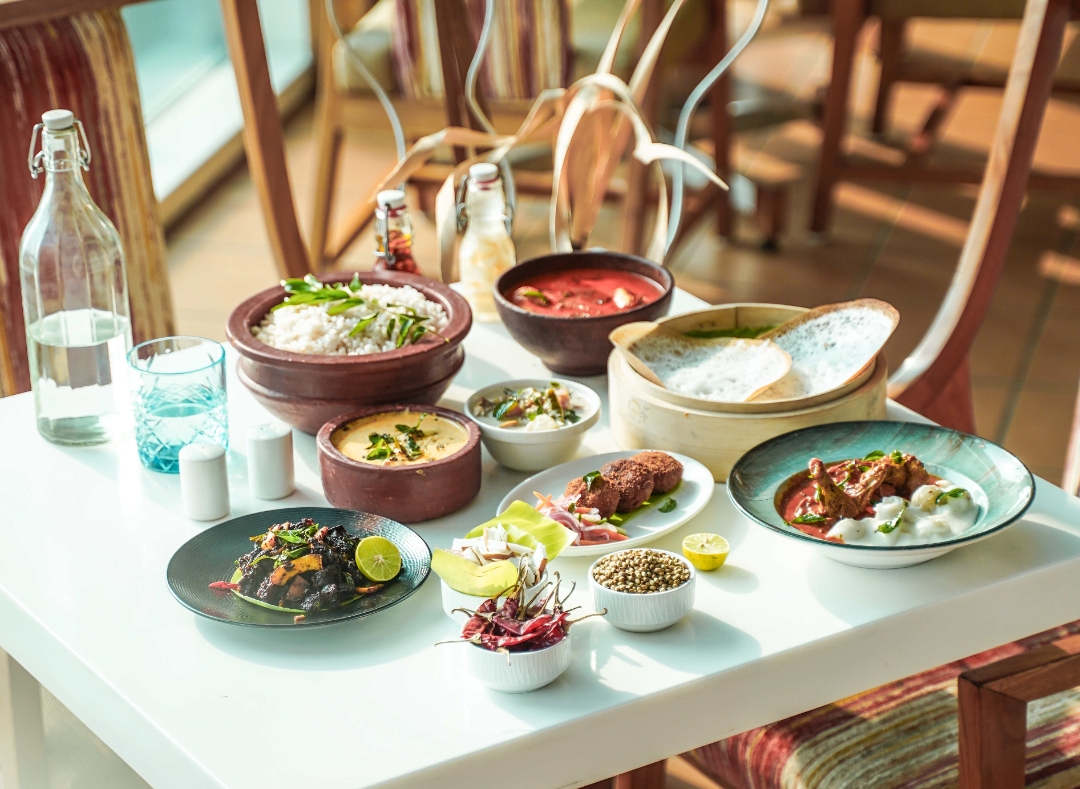Trending Now
- 830 voters names go missing in Kavundampalayam constituency
- If BJP comes to power we shall consider bringing back electoral bonds: Nirmala Sitaraman
- Monitoring at check posts between Kerala and TN intensified as bird flu gets virulent in Kerala
Technology
Samsung Galaxy S9 review: The God of small things. Mostly
![]() May 12, 2018
May 12, 2018
ibling rivalry is a thing. Even among smartphones. Well until last year, Samsung made sure, you wouldn’t notice it. Things are different this year. While the Galaxy S8 and Galaxy S8+ were more or less carbon copies of each other, the Galaxy S9 and Galaxy S9+ are more than the sum of their parts. We’ve already reviewed the Galaxy S9+ and called it a definitive masterpiece. It’s one of the best high-end flagship smartphones of 2018. Period. But where does that leave the smaller Galaxy S9, you ask? In a tight spot, some would say.
It’s easy to write off the Galaxy S9 what with the Galaxy S9+ stealing all the limelight. This is the review of the Galaxy S9, and even I am saying right at the outset, go get yourself the Galaxy S9+ if you can. But here’s the thing. The Galaxy S9+ is a 6.2-inch phone and it’s also more expensive. While the latter part may not be a problem for people looking to invest in a high-end premium handset, the first part can be a deal breaker for many. Not many people are into 6.2-inch phones. There are many people who still prefer small phones. Phones like the Galaxy S9. So while the Galaxy S9+ is the Galaxy S phone to buy this year, question is, is the Galaxy S9 worth buying, or rather is it the best small phone that money can buy? It is mostly.
DESIGN AND BUILD QUALITY
The Galaxy S9 looks exactly like the Galaxy S8. Keep the two side by side, and you’ll never know the difference. Both of them are built out of the same material and boast of the exact same design language. This means that the Galaxy S9 also uses lots and lots of glass — which is Corning Gorilla Glass 5 for your reference — in its construction and has a barely there mid-frame that’s all metal. The Galaxy S9 has the exact same curves. The Galaxy S9 has the exact same Infinity screen that spills over on to the sides. It’s still very gorgeous to look at and even though Samsung isn’t completely getting rid of the bezels — amid the ongoing notch wars to add even more real estate to phones — the Galaxy S9, with its significantly higher bezel set, comes out as futuristic as the rest of the competition. And it does this with a hint of originality that only a certain Samsung can conjure.
The biggest takeaway is that the Galaxy S9 (and the Galaxy S9+) is the only high-end Android phone in the market right now that doesn’t compromise on symmetry. Not an inch of it feels out of place.
The Galaxy S9 looks exactly like the Galaxy S8. Especially from the front. From the back as well. There are a couple of changes though that may seem minor on first look, but, really help take the in-hand feel experience to an all new level. The first is the fingerprint scanner placement. It lies below the camera module now, unlike the Galaxy S8 where it was placed adjacent to it. This means reaching out to it, isn’t as frustrating, although you’ll still end up smudging the camera every now and then. Upon close examination you’ll find Samsung is also polishing the metallic edge further still, giving it a smooth matte texture that feels really, really good in the hands.
The Galaxy S9 is marred by the same set of flaws that mars every other all-glass phone. Which means that it also attracts fingerprints and smudge by the millisecond. It can also be super glossy for some. But, it surely isn’t slippery. Because, it isn’t slippery (enough) you can afford to play around with it without having to worry about accidentally dropping and breaking its glorious curved screen. Should you, however shatter it, you must know Samsung isn’t offering any accidental cover. You’re allowed to drop it in the shower though because the Galaxy S9 is IP68-certified for dust and water resistance.
It’s easy to write off the Galaxy S9 what with the Galaxy S9+ stealing all the limelight
The Bixby button stays, and while I like the direction that Samsung’s personal assistant is going, there’s still some time before it’s ready to give Google and Amazon and Microsoft a run for their money. Samsung now allows you to manually turn the Bixby button off but then it would be nicer if it allowed you to remap it as well.
So, that’s all that there is to the Galaxy S9, and as you’ll notice it has its plus and minus points. Much like any other high-end phone in the market right now. But since we’re talking about small phones in general here, let me be a little more specific. The Galaxy S9 is the most beautiful and the most premium small phone that money can buy. It has the best in-hand feel as well.
DISPLAY
The Galaxy S9 has the best display, among top-tier flagship phones, as well. Especially among Android phones. The reason I say Android is because the iPhone X has the best screen that money can buy if you’re someone who’s more into natural (life-like) colours. The Galaxy S9 has a tendency to boost colours so much so that they may look a little artificial sometimes. Now I am not saying that that’s a bad thing, but, the iPhone X will also be equally good (if not better) for certain people. I actually prefer the iPhone X’s colour palette over the Galaxy S9.
More specifically, the Galaxy S9 has a 5.8-inch Infinity screen backed by Samsung’s proprietary Super AMOLED panel, 2960×1440 pixel (WQHD+) resolution and an unusual aspect ratio of 18.5:9. The phone, by default, hovers around full-HD+ to conserve battery life. The WQHD+ mode has to be manually enabled from the settings. When enabled, and in sync with HDR 10, Samsung’s new phone can quite literally blow your mind entailing in a one-of-its-kind cinematographic experience.
The phone also comes with Samsung’s trademark always-on functionality. No one does always-on better than Samsung either. Not only does it keep enhancing its functionality, it keeps adding more options to it in every iteration. The Galaxy S9, likewise, ships with even more options to customise your lock screen so you can get seamless access to your clock and calendar, as also all your notifications directly on the lock screen, without having you to power up your phone.
PERFORMANCE AND CAMERA
The Galaxy S9 rocks the same core hardware as the larger Galaxy S9+ but there’s a difference in RAM. The Galaxy S9 is powered by an octa-core (with support for Gigabit LTE) Exynos 9810 processor clubbed with 4GB RAM as opposed to the Galaxy S9+ that ships with 6GB RAM. The difference in RAM may not be that much, on paper, but it’s an Android phone that we’re dealing with here and a Samsung one at that. While the Galaxy S9 — like any other Galaxy S phone in the past — may fly like anything to begin with, I have my concerns about the future. Down the line, say after 6 months, the Galaxy S9 will likely not be as fast as it will be on day one.
But here’s the thing. 4GB is like the sweet spot for RAM in the Android world, and while I would have liked Samsung to ship 6GB RAM on the Galaxy S9, I won’t go so far as to say that it’s a slow phone. Or that it will magically turn into one after 6 months. In fact, it will be good enough, for most people. For those looking for more, there’s always the larger Galaxy S9+. But what if you’re someone who prefers smaller phones? Should you or should you not be concerned about the Galaxy S9. Sure, but don’t let that concern cloud your judgement. The Galaxy S9 is a great Android phone that offers great all-round performance — largely because of its top-tier hardware — and yes, Samsung’s software also has a lot to do with it. It’s surely come a long way but more on that later.
Unlike last year, Samsung is offering a bevy of storage options, on the Galaxy S9. There’s 64GB, 128GB and a whopping 256GB option available and every version will support expandable storage of up to 400GB via a hybrid micro-SD card slot.
Phone calls made with the Galaxy S9 were of good quality and we did not encounter any odd call drop issues beyond the usual on our review unit. Samsung has also partnered with Jio and Airtel, to bring LTE carrier aggregation to the Galaxy S9. The Galaxy S9 can stream data at approximately 250Mbps, which is 2.5 times faster than the average smartphone connected to the same network, according to Samsung.
Elsewhere, the Galaxy S9 houses stereo speakers tuned by AKG and supports Doby Atmos sound technology both wired and wireless: firsts for any Samsung phone. They sound really, really good — and actually get quite loud — but the HTC U11+ sounds slightly better (fuller).
Coming to the optics. The Galaxy S9 has the same rear camera as the larger Galaxy S9+. Mostly. This is another big area where Samsung is making you pick sides. While the Galaxy S9+ comes with two cameras on the rear, the smaller Galaxy S9 has only a single camera. That camera is same as the Galaxy S9+’ main camera. Thankfully.
This means the Galaxy S9 has the same primary sensor — which is an in-house ISOCELL Fast 2L3 sensor — as the Galaxy S9+, that can shoot next-generation dual-pixel 12-megapixel photos, assisted by Optical Image Stabilisation. This sensor has a variable aperture and can shoot between f/1.5 and f/2.4 with the former assisting in low light and the latter jumping in when lighting is ideal. A dual-aperture camera allows the Galaxy S9 to shoot photos with more detail in low light, and photos without metering — overexposure — issues when lighting is more than adequate, for instance, when you’re out and about in a warm sunny environment. It’s also possible to manually switch between the two apertures using the phone’s pro-mode although it’s not possible to shoot in apertures in between.
While we’ve come to expect all high-end phones to click amazing photos when the lighting is ideal, it is tricky and low light, where their true potential is realised. I would say, the Google Pixel 2 — with its crazy HDR and massive Google Photos database — is the best camera phone in tricky light, but, low — and exceptionally low — light is where the Galaxy S9 really shines.
The ISOCELL Fast 2L3 sensor, is not only fast to lock focus and fast to shoot, it is also able to seamlessly switch between f/1.5 and f/2.4, in the blink of an eye. At f/1.5, the sensor is able to get hold of crazy amounts of light even though your subject may be in utter darkness, and produce photos that appear brighter, crisper, and with little or no noise. There is, of course, a lot of post-processing going on as well, but unlike Samsung’s previous attempts, the Galaxy S9 manages to click photos that are far less artificial or animated.
The same is true about photos clicked in good lighting, where it’s evident, that Samsung has toned down over-sharpening so its images look more real and true to subject. Not as real as the Pixel 2 though. The Pixel 2, I’ll say, still manages to take better life-like photos, and photos with more detail at the expense of some noise though. But chances are, 9 out of 10 people would be viewing these photos on the smartphone itself, and there’s no denying that the Galaxy S9 photos look amazing on that Super AMOLED panel. Only this time, even your low-light photos, will have the same effect.
Samsung is highlighting a couple of new features, besides claiming that cameras on-board the Galaxy S9 are faster to focus, and faster to shoot: it’s calling them super-speed in fact. These include AR Emoji and Super Slow-mo. You can read more about them here.
The front 8-megapixel camera, on-board the Galaxy S9, is the same deal as the Galaxy S9+. It gets the job done — the Pixel 2 takes more original selfies, if you want a comparison — and also there’s a software-based selfie focus mode that allows you to take portrait selfies.
During the course of this review, I’ve also had the opportunity to try out (and review) the Huawei P20 Pro, and while I really like the P20 Pro’s crazy triple camera setup and its Night mode feature that takes the best low-light photos around, I’d say it does not better the Galaxy S9 in terms of all-round performance. The Galaxy S9 is a better all-round camera phone than the P20 Pro, because not only is it as good (if not better) in low light, it also shoots better videos.
SOFTWARE AND BATTERY LIFE
So, it’s pretty clear that the Galaxy S9 is the most premium pint-sized phone that money can buy. It has the best display, and performance that does not leave you asking for more. It has top-class cameras as well. But it’s not perfect. Its overwhelming software and barely good-enough battery life are a chink in its armor.
Samsung’s custom ROM, aka TouchWiz, has come a long way. It’s not even called TouchWiz anymore. Samsung calls it Experience. The Galaxy S9, being Samsung’s latest of the lot, ships with the latest and what is supposedly the greatest version of Experience software. Based on Android 8.0 Oreo, the Galaxy S9 rocks Experience 9.0.
The Galaxy S9 is not the best small phone in the market right now but it’s certainly the most complete small phone that you can bet your money on right now
Samsung has gone to great lengths to improve the overall design scheme of its software, and the efforts, are quite visible, the moment you power up and start using its new phone. The software is fast and fluid, and it’s seamless across the board. Whether or not it holds up after six months or so, and also whether or not Samsung keeps updating its new phone timely in future, is yet to be seen, but, the company should now work towards simplifying its software as well. While features are good, ease of use shouldn’t be taken for granted. And while at it, it should also work towards cutting its penchant for duplicate apps, because simply put, the Galaxy S9, ships with far too many.
While software look and feel is completely subjective, software updates are something that 9 out of 10 users would want Samsung to fix. As quickly as possible. A silver lining here is that the Galaxy S9 supports Project Treble, so chances are the Galaxy S9 may be updated faster than last year’s Galaxy S8. But then again, we’ll have to wait and watch out on that one.
As for battery life, the 3,000mAh battery on-board the Galaxy S9, doesn’t set any benchmarks either. That’s not to say it’s bad. But then, it could have been better. The Galaxy S9 will last you a full working day provided you’re very easy on it. This means, you’ll be better off toning down that display to full-HD and also tone down the always-on panel while you’re at it. Those who really want more out of their phones, should carry a charger at all times. There’s fast and wireless charging here, so that’s nice.
SHOULD YOU BUY IT?
The Galaxy S9 is not the best small phone in the market right now. It’s still the Google Pixel 2, even though it’s fast becoming dated what with the Pixel 3 almost upon us. But hey, I am not done yet. The Galaxy S9 may not be the best small phone to buy, but it’s certainly the most complete small phone that you can bet your money on right now. The Galaxy S9, unlike any other high-end phone of its stature, checks all the boxes that make a high-end smartphone tick in this day and age.
The Galaxy S9 has the looks and the feel, it has a gorgeous display, good all-round performance with lots and lots of storage (and a micro-SD card slot for expansion), crazy good cameras and stereo speakers that are a force to reckon with. It could have done with some less bloatware and a slightly bigger battery, but then again, there’s no such thing as a perfect smartphone anyway. The only reason I say the Pixel 2 is the best is because it has better software — that’s going to be updated faster than any other phone out there — and has some crazy good cameras to brag about, but even the Pixel 2 is far from perfect. It’s bland and boring, and its display is not as good as the Galaxy S9′. The Pixel 2 is also rocking last-generation hardware.
But there will still be people — tech nerds mostly — who would want to invest in a Pixel over the Galaxy S9. The Galaxy S9, however, would find an audience with the rest of the group. And that group is a substantial one meaning it’s a phone for everybody who can afford it.





